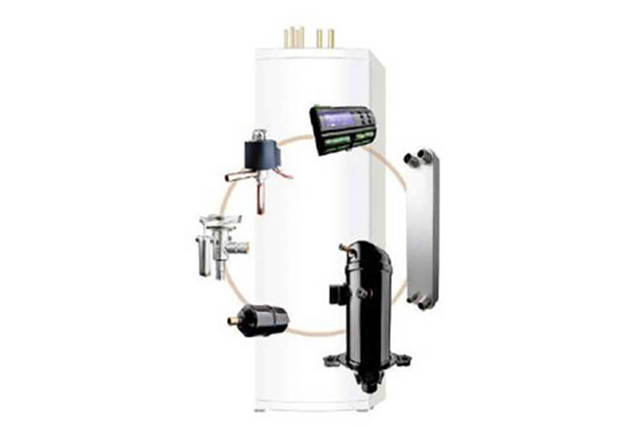Heat pumps are currently in fashion, and are even subsidised by plenty of state, which is quite sensible, because not only do they run on electricity that is emission-free at the point of use, they are also comparatively economical and draw their power from the national grid and centralized generating stations. In general, it will always be more efficient to use centrally generated power to operate equipment such as heat pumps rather than to generate heat locally by burning fossil fuels such as oil or gas, although decentralised solutions such as solar panels, can also be use to operate heat pumps. Heat pumps can be broadly subdivided into three basic systems, air–air, air–water and water (brine)–water. In this instalment you can read about the components that manufacturers use in these heat pump systems.
Heat pumps are currently in fashion, and are even subsidized by plenty of state, which is quite sensible, because not only do they run on electricity that is emission-free at the point of use, they are also comparatively economical and draw their power from the national grid and centralized generating stations. In general, it will always be more efficient to use centrally generated power to operate equipment such as heat pumps rather than to generate heat locally by burning fossil fuels such as oil or gas, although decentralized solutions such as solar panels, can also be use to operate heat pumps. Heat pumps can be broadly subdivided into three basic systems, air–air, air–water and water (brine)–water. In this installment you can read about the components that manufacturers use in these heat pump systems.
Function
A heat pump transports heat. This is the defining characteristic of all heat pumps. It functions in the same way as a compression refrigeration system, except that the principal focus is not on the evaporator side, i.e. the cool side, but on the condenser side where the heating effect is. The essential principle remains the same: evaporation of refrigerant in the evaporator, increase of pressure and hence temperature in the compressor, dissipation of the gained heat by liquefying the refrigerant in the condenser, and subsequent expansion of the refrigerant through the throttle valve. The refrigerants used are also hardly any different from those used in an ordinary refrigeration plant. The preferred refrigerants for heat pump applications are R407C, R410A and R134a.
Types of heat pump
Heat pumps are designated according to the media at the evaporator and condenser, so in an air to air heat pump, the heat is extracted from the surrounding air via the evaporator and passed, in the form of a temperature increase, via the heat pump cycle to the air of the room that is being heated. This is the principle that will generally be found in simple and inexpensive split air-conditioning units with a cycle-reverse function. In the case of an air to water heat pump, the heat is taken from the surrounding air, as for the air to air system, but on the secondary side it is released into the hot water or heating circuit. In the case of a water (brine) to water heat pump, the heat is generally extracted from the ground to be released into the hot water network. Water or brine can be used depending on the expected temperatures. Where pure water is used, special consideration must be given to possible operating conditions at subzero temperatures and during wintertime. If in doubt, the addition of antifreeze (e.g. glycol or some other alcohol) may be a solution. Where the primary circuit runs at markedly subzero temperatures, brine is to be preferred. Water (brine) water heat pumps can be further subdivided into groundwater or well-water heat pumps and heat pumps with horizontal and vertical collectors. For a groundwater or well-water heat pump the heat is taken from the groundwater or from a well. Water (brine) to water heat pumps with horizontal collectors are very popular for houses with plenty of garden. In this case the collectors (plastic or copper pipes) are distributed over the area at a reasonable depth. The third variant for water (brine) to water heat pumps has a vertical collector. This does not require a large area of land but does call for deep drilling, which is a considerable cost factor and needs to be reconciled with the geological situation. There is no general rule of thumb here. For example, in some cases, rocky ground may be more suitable for drilling than clay soil. The following rule applies to all types of heat pumps: Each Kelvin of higher temperature in the heat source produces a higher temperature in the evaporator and therefore leads to higher efficiency in the heat pump.

